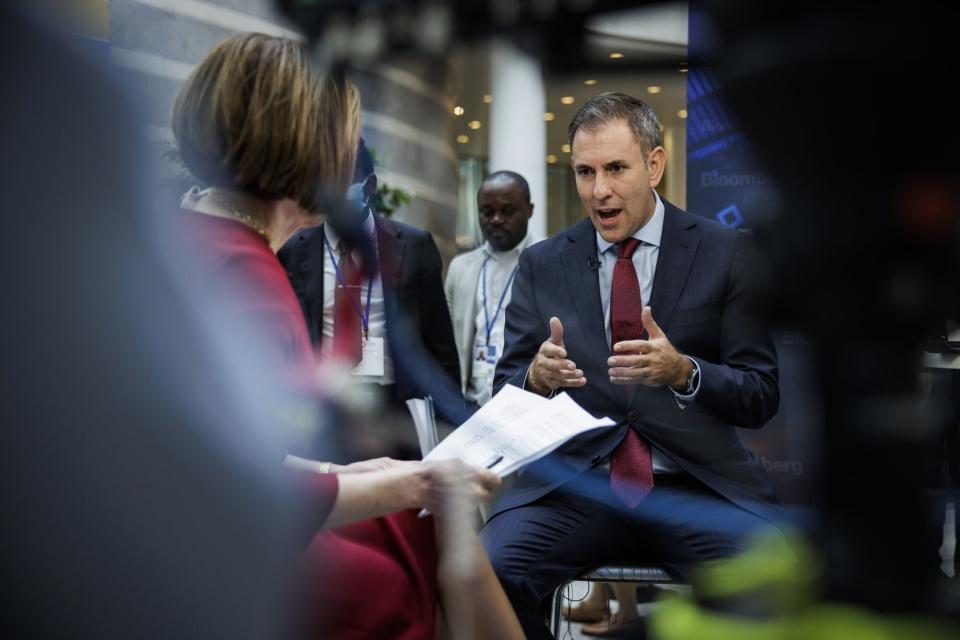RBA Review Recommends Splitting Board, Affirms Inflation Target
(Bloomberg) -- Australia will release the findings of an independent review of its central bank on Thursday with the report recommending the creation of two separate boards — one for monetary policy and the other for governance.
Most Read from Bloomberg
Airline Blunder Sells $10,000 Asia-US Business Class Tickets for $300
Worthless Degrees Are Creating an Unemployable Generation in India
Disney Is Set to Eliminate Thousands of Jobs Starting Next Week
Treasurer Jim Chalmers is expected to announce in-principle agreement with all 51 recommendations, some of which will require changes to the Reserve Bank of Australia’s operating law. Titled “An RBA Fit for the Future,” the review supports the existing inflation-targeting regime.
The first major overhaul of the RBA since inflation targeting began in the early 1990s follows harsh criticism of the institution, ranging from its bungled exit from a yield target program to flawed rate guidance and poor communication.
The treasurer will also announce two new external RBA board members after Wendy Craik and Mark Barnaba decided not to seek reappointment. Chalmers and the RBA will hold separate press conferences to discuss the findings of the report. The central bank’s media briefing will occur at midday.
“The review is all about ensuring Australia’s central bank and monetary policy arrangements are as strong and effective as they can be into the future,” Chalmers said in a statement. He thanked the review panel for its work and said he looked forward to “working across the parliament and with the RBA to implement the recommendations.”
While a dual board structure is common at other central banks, such a change in Australia will require amending the RBA Act. To win bipartisan support, Chalmers discussed the report with opposition Treasury spokesman Angus Taylor, who received multiple briefings from the three-member review panel.
Some of the recommendations may require the agreement of a new Statement on the Conduct of Monetary Policy between the RBA board and the government. Others will fall to the RBA alone to implement as it operates monetary policy independently.
The treasurer previously said he will take the review’s findings into account when deciding on the future of Governor Philip Lowe, whose seven-year term expires in September. Lowe’s two predecessors received a three-year extension to take their total time at the helm to 10 years.
Chalmers had said he will announce his decision on Lowe around June.
The RBA has confronted increasing questions over its policy stance under Lowe’s stewardship. This began pre-pandemic when it failed to meet its 2%-3% inflation target and kept rates higher than needed. Then as Covid eased, it clung to guidance in late 2021 that a rate rise was unlikely before 2024.
Months later, the RBA had to start its most aggressive tightening cycle in three decades that increased borrowing costs by 3.5 percentage points in 11 months to combat surging inflation.
Deputy Governor Michele Bullock conceded last week that the RBA and other central banks had underestimated the combined power of fiscal and monetary policies during the pandemic and that the inflation breakout in 2021 had appeared “transitory” then. “We muddied the communication, I think, and so we didn’t do as well as we could have,” Bullock said.
The RBA board’s composition has also drawn criticism as it includes only one economist among six independent directors who were mainly from business — leaving them ill-equipped to push back against the bank’s views. Lowe, Bullock and Treasury Secretary Steven Kennedy round out the board, and only Kennedy has access to resources to challenge the bank.
The governor has defended the board, saying its members are diligent, ask lots of questions and review various scenarios before making a decision.
Jonathan Kearns, a former RBA department head, argues that moving to an expert policy committee and separate governance board has shown value at other central banks.
“I don’t think these are radical changes,” he said of the expected recommendations from the RBA review in an interview this month. “I think actually not doing those would be more radical because we’ve already seen the test case of being able to observe other central banks.”
Most Read from Bloomberg Businessweek
The Repo Man Returns as More Americans Fall Behind on Car Payments
Americans Go Deeper Into Debt as They Use Buy Now, Pay Later Apps for Groceries
Republicans Fight a Solar Boom That’s Made Texas King of Clean Energy
People Are Using AI for Therapy, Even Though ChatGPT Wasn’t Built for It
©2023 Bloomberg L.P.




